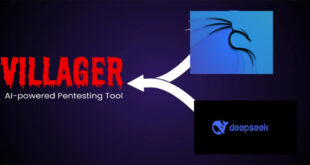Security researchers were able to bypass authentication on three popular laptops by testing the fingerprint sensors used for Windows Hello. The research was done by Blackwing Intelligence and Microsoft’s MORSE.
Target devices include a Dell Inspiron 15 with a Goodix fingerprint sensor, a Lenovo ThinkPad T14s with a Synaptics sensor, and a Microsoft Surface Pro X with an ELAN sensor. The embedded fingerprint sensors and the host were targeted with software and hardware attacks.
By infosecbulletin
/ Wednesday , September 17 2025
A threat actor claims to have breached Link3, a major IT solutions and internet service provider based in Bangladesh. The...
Read More
By infosecbulletin
/ Wednesday , September 17 2025
Check point, a cyber security solutions provider hosts an event titled "securing the hyperconnected world in the AI era" at...
Read More
By infosecbulletin
/ Tuesday , September 16 2025
Cross-Site Scripting (XSS) is one of the oldest and most persistent vulnerabilities in modern applications. Despite being recognized for over...
Read More
By infosecbulletin
/ Monday , September 15 2025
Every day a lot of cyberattack happen around the world including ransomware, Malware attack, data breaches, website defacement and so...
Read More
By infosecbulletin
/ Monday , September 15 2025
A critical permission misconfiguration in the IBM QRadar Security Information and Event Management (SIEM) platform could allow local privileged users...
Read More
By infosecbulletin
/ Monday , September 15 2025
Australian banks are now using bots to combat scammers. These bots mimic potential victims to gather real-time information and drain...
Read More
By infosecbulletin
/ Saturday , September 13 2025
F5 plans to acquire CalypsoAI, which offers adaptive AI security solutions. CalypsoAI's technology will be added to F5's Application Delivery...
Read More
By infosecbulletin
/ Saturday , September 13 2025
The Villager framework, an AI-powered penetration testing tool, integrates Kali Linux tools with DeepSeek AI to automate cyber attack processes....
Read More
By infosecbulletin
/ Saturday , September 13 2025
Samsung released its monthly Android security updates, addressing a vulnerability exploited in zero-day attacks. CVE-2025-21043 (CVSS score: 8.8) is a...
Read More
By infosecbulletin
/ Saturday , September 13 2025
Albania has appointed the first AI-generated government minister to help eliminate corruption. Diella, the digital assistant meaning Sun, has been...
Read More
AlSO READ:
By 2025, Domestic cloud market expected $46.3 million; MD “DataHub Asia”
The sensors that were tested are Match-on-Chip, meaning the chip has a microprocessor and memory, and the fingerprint data always stays within the sensor. To bypass authentication, one would need to physically attack the chip itself.
To carry out the attack, the attacker needs to physically get hold of the device. This means they would have to either steal the device or use the evil maid method.
The researchers showed how to carry out attacks by connecting a hacking device to a laptop using USB or by connecting a specially crafted rig to the fingerprint sensor.
For Dell and Lenovo laptops, the Windows Hello fingerprint authentication was bypassed by manipulating valid user fingerprint ID numbers and enrolling the attacker’s fingerprint by imitating a legitimate user’s ID.
To hack the Surface device, the attacker must disconnect the Type Cover, which is the keyboard and fingerprint sensor, and connect a USB device that tricks the fingerprint sensor into thinking it’s an authorized user logging in.
Blackwing published a blog post on Tuesday about their findings. Microsoft also released a video of the Blackwing researchers presenting their findings at the BlueHat conference in October.
 InfoSecBulletin Cybersecurity for mankind
InfoSecBulletin Cybersecurity for mankind













